Regulierung internationaler Finanzmärkte und Banken
Die Forschungsgruppe "Regulierung internationaler Finanzmärkte und Banken" analysiert internationale Kapitalströme und die Auswirkungen von Regulierungsänderungen auf die Finanzstabilität. Integrierte Finanzmärkte begünstigen eine effiziente Kapitalallokation und Risikoteilung – sie erleichtern aber auch die grenzüberschreitende Übertragung von Schocks.
Dementsprechend hat sich die Bankenregulierung in den letzten Jahren weiterentwickelt, wobei die vollen Auswirkungen dieser Reformen noch unklar sind. Daher konzentriert sich die Forschung der Gruppe auf zwei Bereiche:
Erstens werden die Haupttreiber internationaler Kapitalströme und deren Auswirkungen auf Finanzstabilität untersucht. Zeiten hoher Finanzintegration sind oft gefolgt von Krisen mit nachhaltigen realwirtschaftlichen Folgen. Ziel ist es, zu verstehen, wie eine stabile und effektive Kreditvergabe gewährleistet werden kann.
Zweitens wird untersucht, wie sich Veränderungen in der Regulierung und Aufsicht auf das grenzüberschreitende Bankgeschäft auswirken, insbesondere im Kontext der europäischen Integration. Dazu gehört die Bewertung des Trade-offs zwischen regulatorischer Harmonisierung und unbeabsichtigten Marktverzerrungen.
Zwei Datenprojekte tragen zu diesen Forschungsthemen bei: die International Banking Library, eine webbasierte Plattform für den Forschungsaustausch mit einem vierteljährlichen Newsletter, der mehr als 700 Abonnenten erreicht, und die Financial Markets Directives Database, die die Umsetzung der wichtigsten EU-Vorschriften im Bereich Finanzmärkte mit besonderem Schwerpunkt auf der Europäischen Bankenunion dokumentiert. Gemeinsam fördern sie eine evidenzbasierte Politikanalyse und erhöhen die Sichtbarkeit der Gruppe.
Forschungscluster
Wirtschaftliche Dynamik und StabilitätIhr Kontakt

- Abteilung Finanzmärkte
PROJEKTE
10.2021 ‐ 06.2025
Distributional Effects of Macroeconomic Policies in Europe (DEMAP)
Leibniz-Gemeinschaft
Das Projekt untersucht wie politische Maßnahmen auf dem Level der Europäischen Union, wie zum Beispiel der European Recovery Fund, die Ungleichheit zwischen Haushalten beeinflusst.
07.2017 ‐ 12.2022
Die politische Ökonomie der europäischen Bankenunion
Europäischer Sozialfonds (ESF)
Ursachen für nationale Unterschiede in der Umsetzung der Bankenunion und daraus resultierende Auswirkungen auf die Finanzstabilität.
01.2015 ‐ 12.2017
Dynamic Interactions between Banks and the Real Economy
Deutsche Forschungsgemeinschaft (DFG)
Referierte Publikationen

Global Banks and Synthetic Funding: The Benefits of Foreign Relatives
in: Journal of Money, Credit and Banking, Nr. 1, 2024
Abstract
<p>Abstract This paper examines the effect of dislocations in foreign currency (FX) swap markets ("CIP deviations") on bank lending. Using data from UK banks we show that when the cost of obtaining swap-based funds in a particular foreign currency increases, banks reduce the supply of cross-border credit in that currency. This effect is increasing in the degree of banks' reliance on swap-based FX funding. Access to foreign relatives matters as banks employ internal capital markets to shield their cross-border FX lending supply from the described channel. Partial substitution occurs from banks outside the UK not affected by changes in synthetic funding costs.</p>
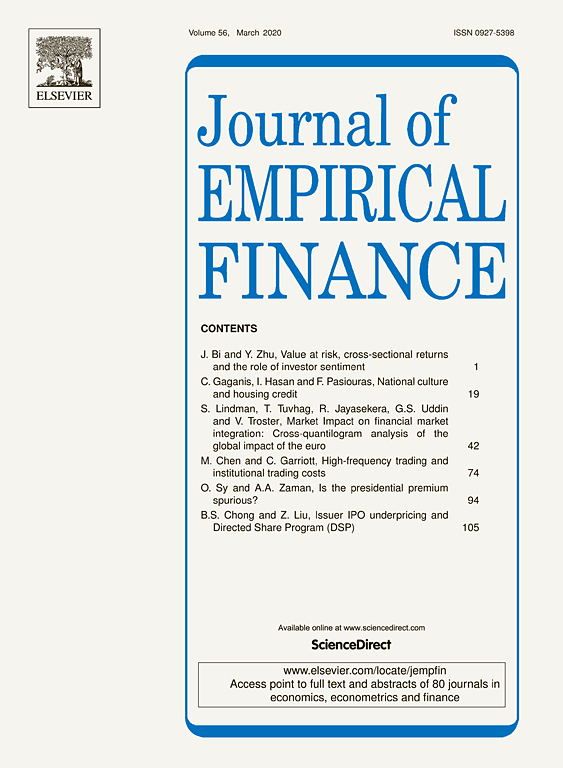
Ownership Structure and the Cost of Debt: Evidence From the Chinese Corporate Bond Market
in: Journal of Empirical Finance, September 2023
Abstract
Drawing upon evidence from the Chinese corporate bond market, we study how ownership structure affects the cost of debt for firms. Our results show that state, institutional and foreign ownership formats reduce the cost of debt for firms. The benefits of state ownership are accentuated when the issuer is headquartered in a province with highly developed market institutions, operates in an industry less dominated by the state or during the period after the 2012 anti-corruption reforms. Institutional ownership provides the most benefits in environments with lower levels of marketization, especially for firms with low credit quality. Our evidence sheds light on the nexus of ownership and debt cost in a political economy where state-owned enterprises (SOEs) and non-SOEs face productivity and credit frictions. It is also illustrative of how the market environment interacts with corporate ownership in affecting the cost of bond issuance.
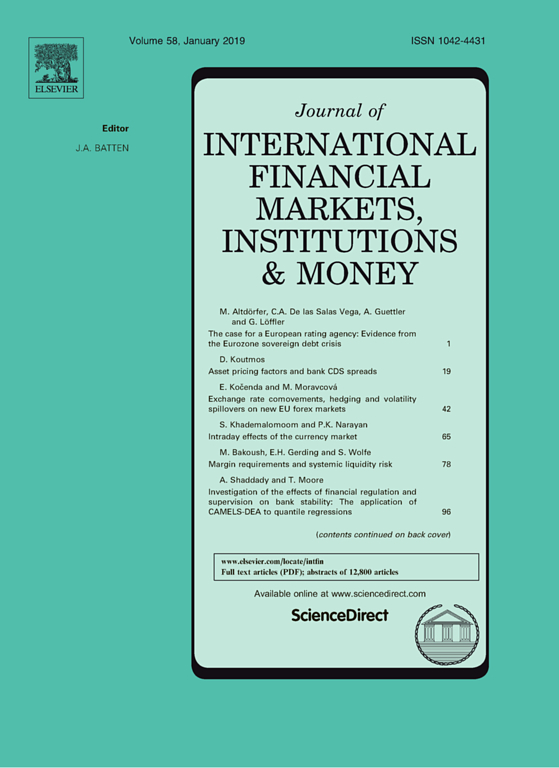
Cultural Values of Parent Bank Board Members and Lending by Foreign Subsidiaries: The Moderating Role of Personal Traits
in: Journal of International Financial Markets, Institutions and Money, March 2023
Abstract
In this study, we investigate whether the cultural values of a parent bank’s board members affect lending by the bank’s foreign subsidiaries and how this influence is moderated by the board members’ personal traits. Using a new dataset on foreign-owned banks and their parent companies, we find that average individualism, uncertainty avoidance, and indulgence within parent bank boards significantly impact lending by foreign subsidiaries. We establish that different sensitivities of female and male directors modify the relevance of individual cultural dimensions in lending by foreign bank subsidiaries. Moreover, we show that parent bank directors’ cultural values have a stronger impact on lending by the bank’s foreign subsidiaries when those directors have enough time to fulfill their duties and possess higher ownership stakes in the parent companies.
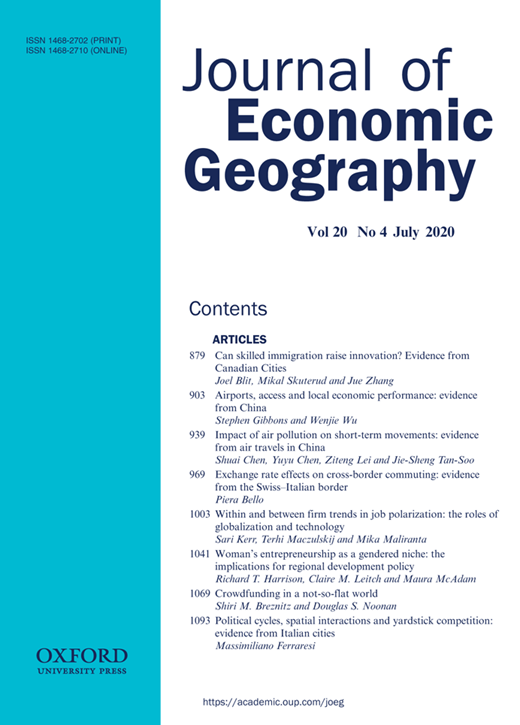
The Geography of Information: Evidence from the Public Debt Market
in: Journal of Economic Geography, Nr. 1, 2023
Abstract
nWe investigate the link between the spatial concentration of firms in large, central metropolitans (i.e. urban agglomeration) and the cost of public corporate debt. Looking at bond issues over the period 1985–2014, we find that bonds issued by companies headquartered in urban agglomerates have lower at-issue yield spreads than bonds issued by firms based in remote, sparsely populated areas. Measures of the count of institutional bondholders in a firm’s vicinity confirm that the spatial cross-sectional variation in bond spreads is driven by the proximity of metropolitan firms to large concentrations of institutional investors. Our results are robust to controls for firm productivity and governance, analyst following, and exogenous shocks to institutional investor attention. The effect of headquarters location on bond spreads is especially pronounced for more difficult to value, speculative-grade bonds, bonds issued by smaller, less visible firms and bonds issued without protective covenants. Overall, we provide evidence that the geographical distribution of firms and investors generates a corresponding distribution of value-relevant, firm-level information that affects its cost of capital.
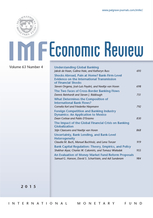
Financial Linkages and Sectoral Business Cycle Synchronization: Evidence from Europe
in: IMF Economic Review, December 2022
Abstract
We analyze whether financial integration leads to converging or diverging business cycles using a dynamic spatial model. Our model allows for contemporaneous spillovers of shocks to GDP growth between countries that are financially integrated and delivers a scalar measure of the spillover intensity at each point in time. For a financial network of ten European countries from 1996 to 2017, we find that the spillover effects are positive on average and much larger during periods of financial stress, pointing towards stronger business cycle synchronization. Dismantling GDP growth into value added growth of ten major industries, we observe that spillover intensities vary significantly. The findings are robust to a variety of alternative model specifications.
Arbeitspapiere

Banks’ foreign homes
in: Deutsche Bundesbank Discussion Papers, Nr. 46, 2024
Abstract
<p>Our results reveal that higher lending spreads between foreign and home markets redirect real estate backed lending towards foreign markets offering a higher interest rate, which provides evidence for "search for yield" behavior. This re-allocation is found especially for banks with more expertise on the foreign market due to a higher local activity and holds for commercial and residential real estate backed loans. Furthermore, "search for yield" behavior and a resulting increase in foreign real estate backed lending is found when macroprudential regulation is missing or misaligned between a bank’s country of residence and the destination country. When turning to the question of whether the detected search for yield behavior results in more risk, we find that especially better capitalized banks report higher forbearance ratios as they might face less stigma effects compared to low capitalized banks.</p>
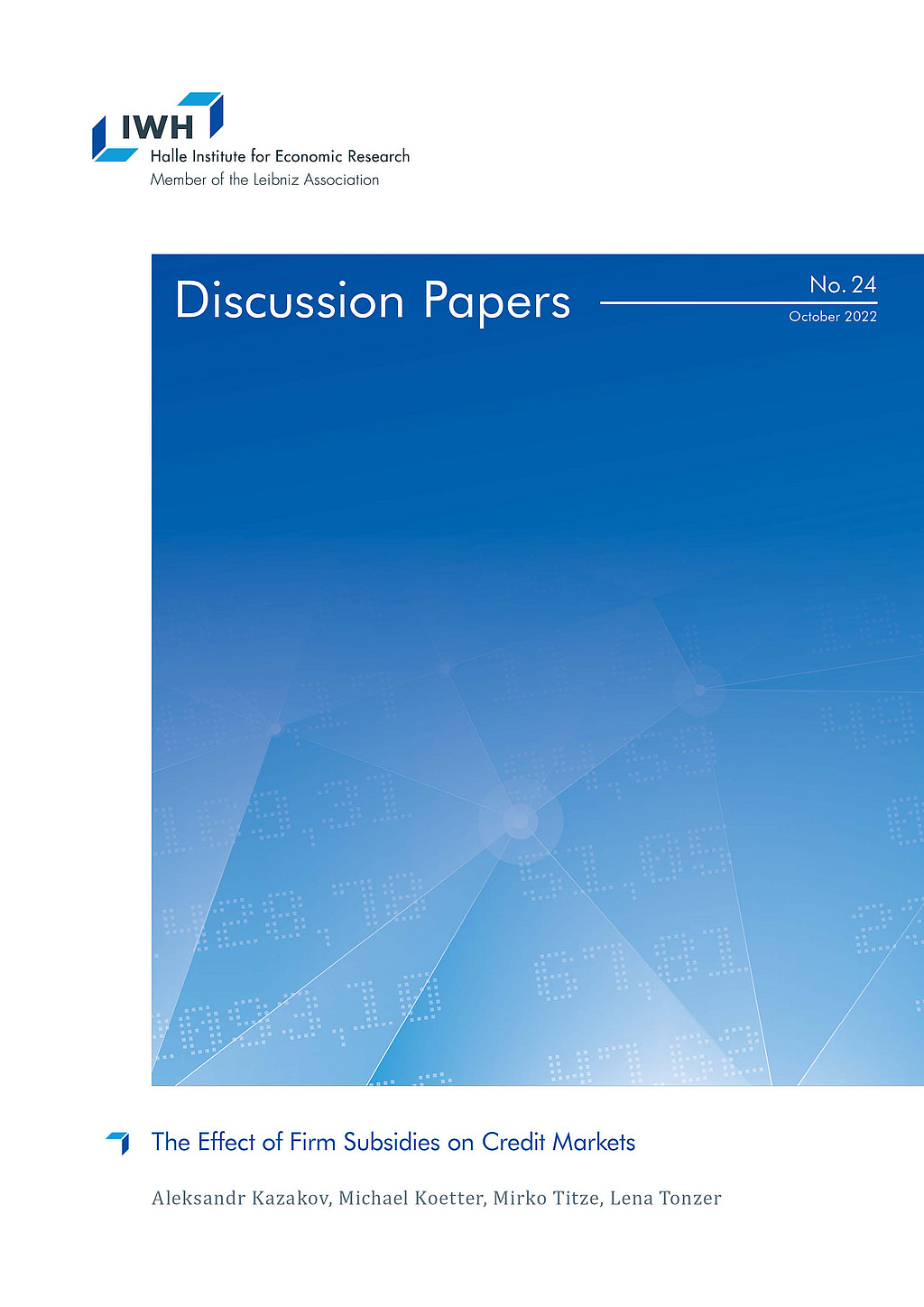
The Effect of Firm Subsidies on Credit Markets
in: IWH Discussion Papers, Nr. 24, 2022
Abstract
<p>We use project-level information for the largest regional economic development program in German history to study how government subsidies to firms affect credit markets. We identify credit market responses by considering both, bank lending and firm borrowing during 1998-2019. We find that subsidies lead to larger lending volumes without crowding out credit to non-subsidized firms. Banks that are more exposed to subsidized firms exhibit moderately higher credit risk though. Firm subsidies support lending especially when credit constraints are elevated during the years of the financial crisis.</p>
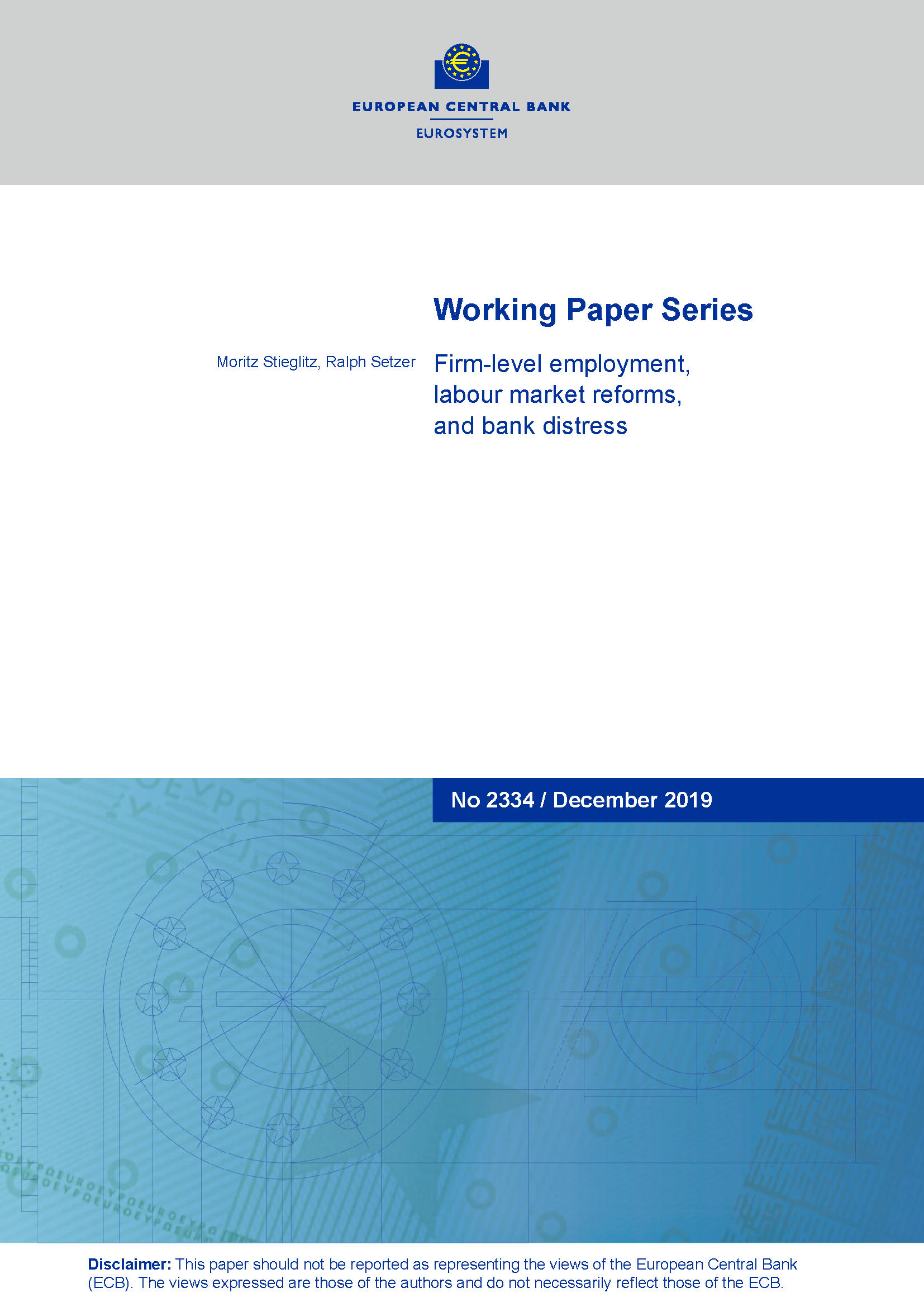
Climate Change-Related Regulatory Risks and Bank Lending
in: ECB Working Paper, Nr. 2670, 2022
Abstract
We identify the effect of climate change-related regulatory risks on credit real-location. Our evidence suggests that effects depend borrower's region. Following an increase in salience of regulatory risks, banks reallocate credit to US firms that could be negatively impacted by regulatory interventions. Conversely, in Europe, banks lend more to firms that could benefit from environmental regulation. The effect is moderated by banks' own loan portfolio composition. Banks with a portfolio tilted towards firms that could be negatively a affected by environmental policies increasingly support these firms. Overall, our results indicate that financial implications of regulation associated with climate change appear to be the main drivers of banks' behavior.

Explaining Regional Disparities in Housing Prices Across German Districts
in: IWH Discussion Papers, Nr. 13, 2022
Abstract
Over the last decade, German housing prices have increased unprecedentedly. Drawing on quality-adjusted housing price data at the district level, we document large and increasing regional disparities: Growth rates were higher in 1) the largest seven cities, 2) districts located in the south, and 3) districts with higher initial price levels. Indications of price bubbles are concentrated in the largest cities and in the purchasing market. Prices seem to be driven by the demand side: Increasing population density, higher shares of academically educated employees and increasing purchasing power explain our findings, while supply remained relatively constrained in the short term.
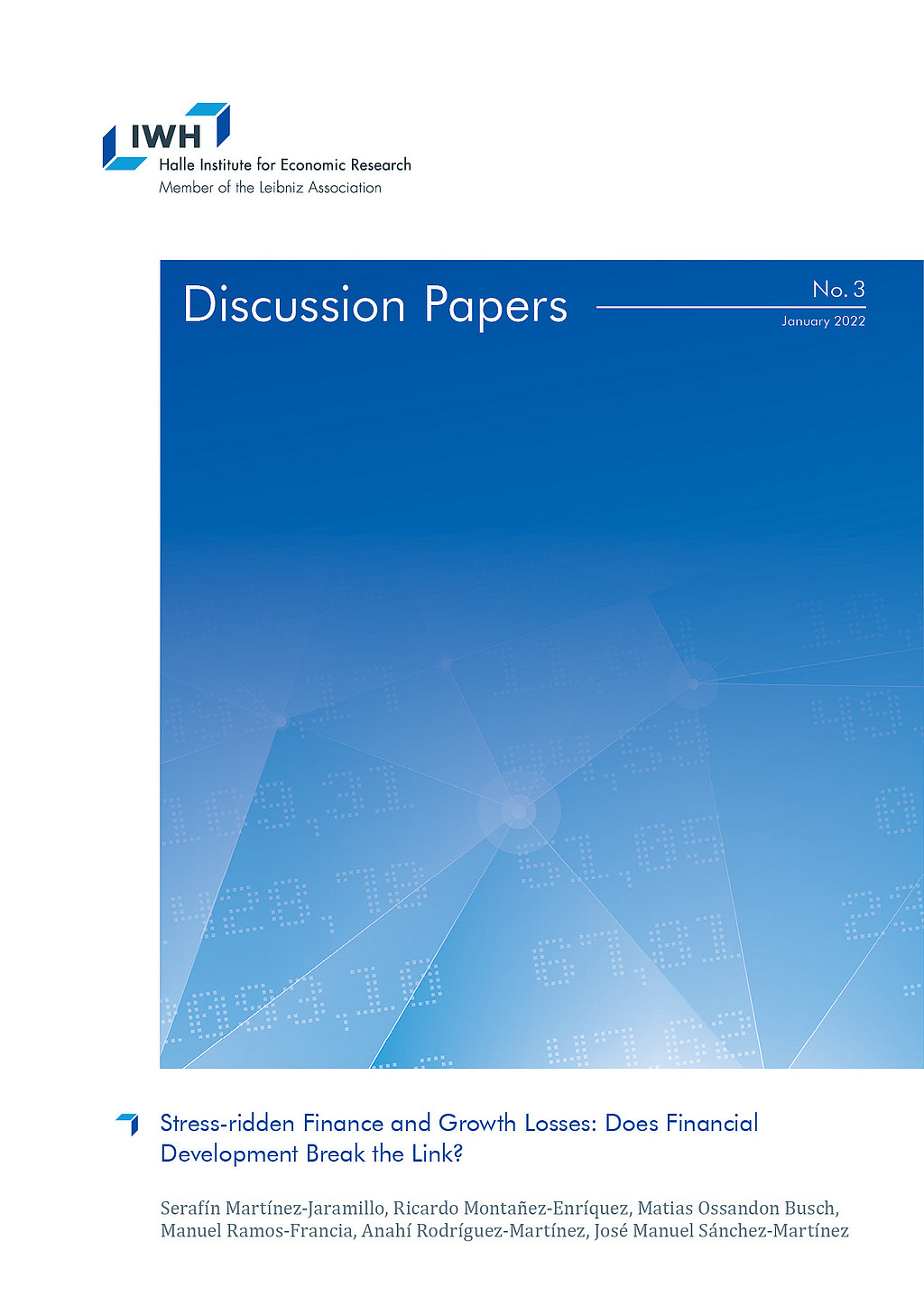
Stress-ridden Finance and Growth Losses: Does Financial Development Break the Link?
in: IWH Discussion Papers, Nr. 3, 2022
Abstract
Does financial development shield countries from the pass-through of financial shocks to real outcomes? We evaluate this question by characterising the probability density of expected GDP growth conditional on financial stability indicators in a panel of 28 countries. Our robust results unveil a non-linear nexus between financial stability and expected GDP growth, depending on countries’ degree of financial development. While both domestic and global financial factors affect expected growth, the effect of global factors is moderated by financial development. This result highlights a previously unexplored channel trough which financial development can break the link between financial (in)stability and GDP growth.















